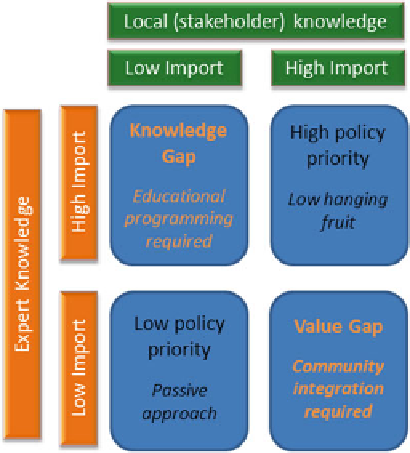Geoscience Reference
In-Depth Information
Fig. 18.2
Complementary
knowledge sources for
policy-relevant ecosystem
service research
to ES, but experts do not, then there is a
values gap
. In our region, the knowledge
gap exists where the public has little understanding of the broad value of biodiversity
and the presence of supporting ES. On the other hand, as in the Sasgon example,
ecologists found little ecological importance in the valley, yet the local population
emphatically demonstrated that its landscape value was of utmost importance
(the values gap).
18.4
Conclusions
ES tradeoffs is a recurring theme in our research and experience. Maximization of
one or more services may lead to the degradation of others; maximization of some
may yield a decline in biodiversity. This issue has been covered in the literature,
both theoretically (Foley et al.
2005
; de Groot et al.
2010
) and also practically,
within the context of community stakeholder engagement (Fraser et al.
2006
;
Cowling et al.
2008
; Chan et al.
2012
). We fi nd the model proposed by de Groot and
colleagues (
2010
) useful in explaining this dynamic. Their model suggests that it is
possible, like in our case studies, to raise the value of cultural-recreational services
through a small amount of development, but this may come at the expense of
regulating services, cultural-informational services, and biodiversity. In general, as
their model and our experience suggests, land use decisions will often be a function
of trade-offs in the composition of a bundle of ES; the optimal bundle of services is
a socio-ecological decision that should be made through community discussion.

Search WWH ::

Custom Search